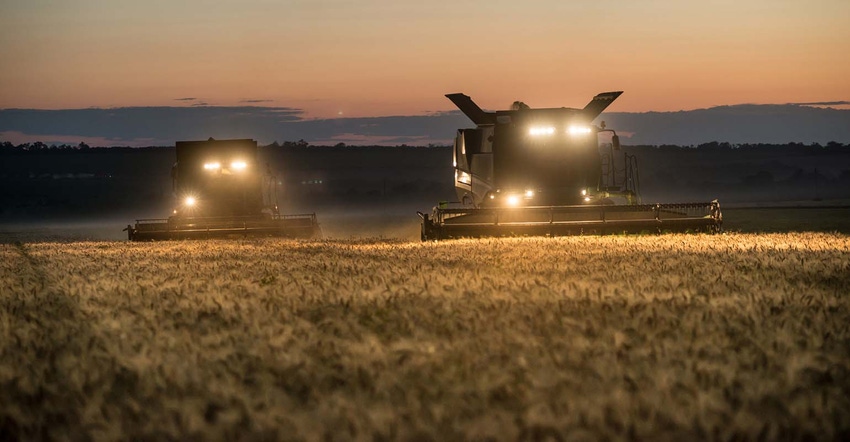
Harvesting has been slow in Kansas as custom crews have been delayed by rain showers and by late-maturing fields.
Once the combines get rolling, harvesters continue to find a wide range of yields. Mike Matejcek reported up to 90 bushels an acre from about 3,600 acres in Reno County in the south central part of the state.
“It had a 75 bushel average and the best was 89.7,” Matejcek said. “The farmer top dressed it and used fungicide and he doesn’t have a weed in the field.”
However, in other fields that were hit by disease or harsh weather yields ranged from 20 to 50 bushels, he said.
Harvester Irvin Odegard had a similar experience in southwest Kansas where some fields produced 70 bushel yields and others 20 bushels. He encountered fields affected by wheat streak mosaic and others that did not fully recover from the late April snowstorm.
While many fields have been slow to mature, Odegard said the recent hot weather should speed development.
“We had some 100 to 105-degree days lately so it is coming along pretty quickly,” he said.
Rain also was common this past week, which slowed harvest crews.
“The rain doesn’t hurt the crop too much, but it may lighten the test weights a little,” he said.
Shorty Kulhanek’s combines have largely been parked near Wakeeny in western Kansas since last weekend as rain and late maturing wheat prevented harvesting. “Everything is green,” he said.
The few fields Kulhanek was able to harvest average 35- to 40-bushel yields, and had low protein readings.
Wakeeny also has been hot with 100-degree days common the past week. Rain and cooler weather are due through the weekend, with highs in the 70s, said Kulhanek.
A common complaint from the harvesters has been the fewer acres to cut this year. Farmers either did not plant as much wheat last fall or later plowed up wheat fields that were hurt by the dry fall. The plowed fields were then replanted to canola, cotton, sorghum or soybeans.
“There just are not any extra acres to cut,” said Matejcek. “I am done in Kansas, I will be going to North Dakota.”
As of June 18, USDA said 22% of the Kansas wheat was harvested versus the 25% average and it rated the crop 46% good to excellent, compared with 62% a year ago.
USDA currently forecasts Kansas wheat to average 44 bushels an acre, which would be down from last year’s 57. Statewide production was forecast at 303.6 million on 6.9 million acres, compared with 467.4 million bushels from 8.2 million acres in 2016.
About the Author(s)
You May Also Like




